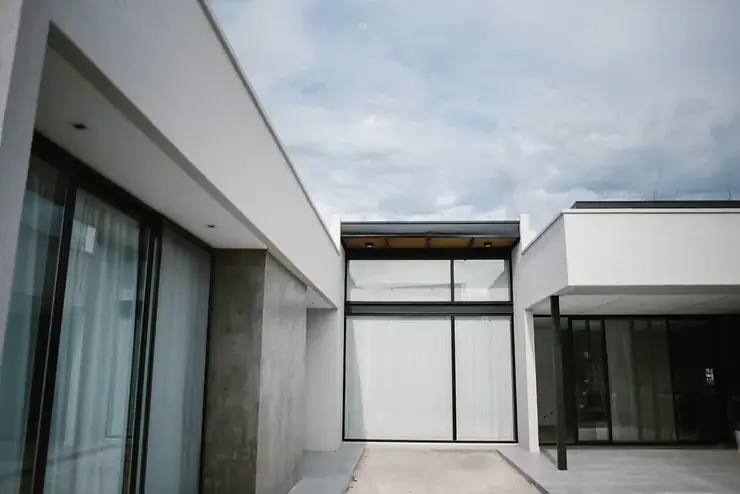Industrialized construction represents an innovative approach to the construction industry, transforming the sector by incorporating techniques and processes typical of the manufacturing industry. This system is based on the prefabrication of components, which are produced in a controlled environment, such as factories or production plants, and then transported to the construction site for assembly. Unlike traditional construction, which is carried out entirely on site, industrialization optimizes execution times, improves precision and minimizes errors throughout the construction process.
One of the most notable characteristics of industrialized construction is its ability to take advantage of mass production of structural and non-structural elements through repetitive and standardized procedures. This not only guarantees a high level of quality in the final product, but also increases efficiency in the execution of projects. Industrialized construction is revolutionizing the way large projects are managed, especially those that demand speed, precision and scalability.
Main Features of Industrialized Construction
1. Prefabrication of Components Prefabrication is at the heart of industrialized construction. Structural elements such as concrete panels, modules, and steel profiles are manufactured in controlled environments under rigorous quality standards. This approach allows the production process to be highly repeatable, improving accuracy and ensuring that each component meets the exact specifications of the project. By carrying out manufacturing in a controlled environment, variables that could compromise quality, such as inclement weather or delays at the construction site, are reduced.
2. Modularity In many cases, industrialized construction relies on a modular approach. This involves creating complete modules of a building, such as rooms, bathrooms, or structural sections, which are then assembled on site. Modularity offers great flexibility in both project design and execution, as modules can be combined and reconfigured to meet various needs. This approach also allows for quick and efficient adjustments to the layout and dimensions of spaces, which is particularly beneficial for projects that require adaptations over time.
3. Use of Advanced Technology Industrialized construction frequently relies on advanced design and planning technologies, such as BIM (Building Information Modeling). BIM facilitates the creation of detailed digital models of the project, which improves coordination between the different teams involved, from architects to engineers and contractors. With this technology, it is possible to anticipate errors and solve problems before they arise during the construction phase, thus optimizing time and reducing costs. In addition, the use of advanced technology in factories allows part of the production process to be automated, further increasing efficiency and precision.

Advantages of Industrialized Construction
1. Speed of Execution Industrialized construction allows for a significant acceleration in construction times. By manufacturing the building elements simultaneously with site preparation, many of the delays that often plague conventional projects are eliminated. This includes delays due to adverse weather conditions, problems in the supply chain of materials or shortages of labor. In addition, the assembly of modules or components on site is done in an agile and efficient manner, allowing projects to be completed in considerably shorter times than with traditional methods.
2. High Precision and Quality Prefabrication in a controlled environment ensures a high level of precision in the production of components. The standardization of processes minimizes human errors and variations in material quality. Each component is subjected to rigorous quality controls before being transported to the construction site, ensuring that it meets the required specifications and standards. This not only raises the final quality of the building, but also reduces the need for repairs or adjustments during the assembly process.
3. Economic Efficiency Although the initial investment in factories, machinery and technology for industrialized construction can be considerable, the long-term savings are significant. Decreased construction times and reduced need for on-site labor generate significant savings in operating costs. In addition, by optimizing the use of materials and reducing waste, expenses associated with resource acquisition are reduced. Projects also benefit from less need for maintenance and repairs thanks to the consistent quality of prefabricated components.
4. Sustainability Industrialized construction is inherently more sustainable than traditional techniques. By operating in a controlled environment, materials can be used more efficiently and waste generation can be reduced during the process. Components can also be manufactured using recyclable or low-environmental-impact materials, helping to reduce the project’s carbon footprint. This approach also allows for more effective management of energy resources both in the factory and on the construction site, making industrialized construction an optimal choice for sustainable projects.
5. Reduced Site Impact As much of the work is carried out in factories, industrialised construction has a significantly lower impact on the project area. This means less disruption to neighbours and the surrounding environment, as the time workers and machinery spend on site is considerably reduced. In addition, less noise, dust and debris are generated, thus improving environmental conditions around the construction area. In urban projects where space and time are limited, this advantage is especially valuable.
Applications of Industrialized Construction
Industrialized construction is used in a wide variety of projects, ranging from single-family homes to large commercial and industrial developments. This method adapts to different needs and scales effectively. Some examples of its applications are:
1. Residential Housing: This approach is applied in residential projects ranging from individual houses to large apartment complexes, providing fast and efficient solutions.
2. Commercial Buildings: Industrialized construction is also beneficial for the construction of offices, shopping centers and other commercial spaces, taking advantage of its speed and efficiency in execution.
3. Industrial Projects: Facilities such as logistics centers, factories and other industrial infrastructure find in this method an adequate response for projects that require both scalability and speed in their implementation.

